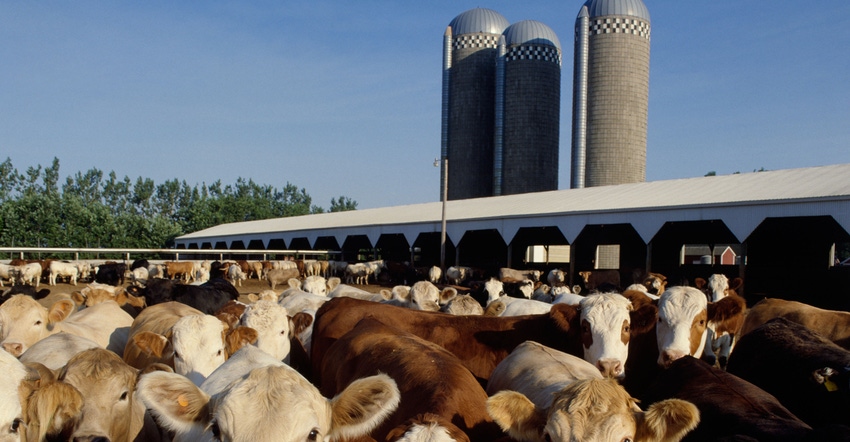December 14, 2021

Just how is your beef feedlot doing? You may have a feel for your individual income level, but could you be doing better? How would you know? Answering those questions is easier if you have tools you can use to benchmark your operation beside others. The Iowa Beef Center recently released a publication to help the state's producers with benchmarking.
With benchmarking, producers can see how their business does alongside industry trends, but this new data set is targeted specifically at Iowa. IBC specialists collaborated on summarizing closeout data from more than 171,000 head of yearling steers and heifers enrolled in the Iowa Feedlot Monitoring program from 2017 through 2020. Those results are put together in a new publication called "Benchmarking the Performance of Iowa Feedlot Cattle."
"This is the first information like this I've seen from the Iowa Beef Center for a long time," says Beth Doran, Iowa State University Extension and Outreach beef specialist. "The Iowa Beef Center is involved with producers for a feedlot monitoring program, and those producers get benchmark data quarterly."
Doran, who led the project, explains that averages are reported for each year and overall for the four-year time period for both steers and heifers. "Also, performance and financial data were summarized for almost 99,000 head of cattle finished in four types of facilities — windbreaks, outdoor lots with shelter, open lot and confinement," she says.
The report demonstrates that cattle characteristics, facility type and extraneous factors, such as weather, commodity prices and marketing disruptions, greatly affect benchmarking values.
"The benchmarking report can be used two ways," Doran says. "You can use it to compare yourself against other operations and other feedlots in Iowa, or other feedlots across the nation."
She adds that another way to use the information is in exploring how numbers change from year to year in your operation or by group of cattle. It can be a kind of internal measure to explore how different factors in your operation can change results, whether it's a feeding program or timing for marketing cattle.
The report includes detailed information for each of the four years, providing any feedlot operator a chance to see how their operation performs. It's a way to answer questions about your management approach and can help target areas for improvement.
Weather and more
Doran notes that a lot of factors can vary from one area of the state to another. "I would say use the information with caution, because it's different in southwest Iowa versus northeast Iowa," she adds. "Weather can make a big difference, as well as market access, in the numbers."
She adds that the variabilities across the state, as well as other disruptive factors, is why the center encourages Iowa cattle producers to use benchmarking as a tool to monitor progress in the operation over time. "It's also important for them to be cautious in comparing their feedlot with other feedlots at a specific point in time," she adds.
You can download a free copy of the report at store.extension.iastate.edu/product/16292.
About the Author(s)
You May Also Like






